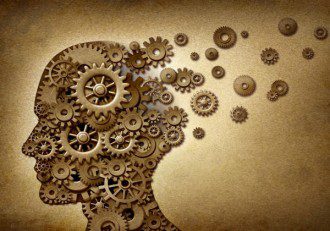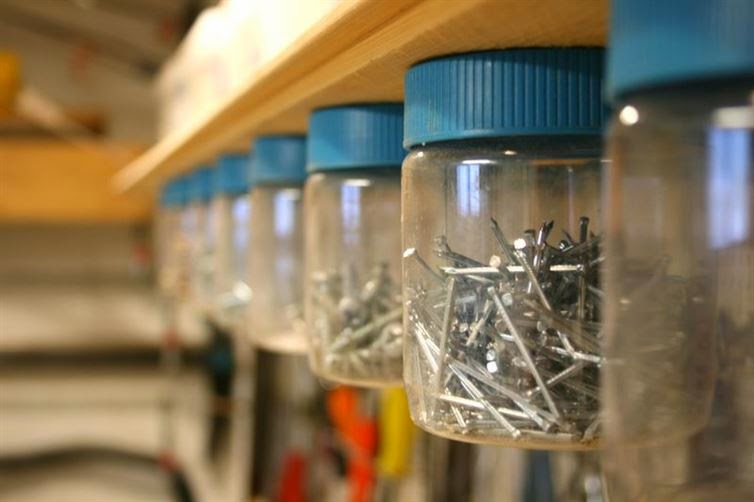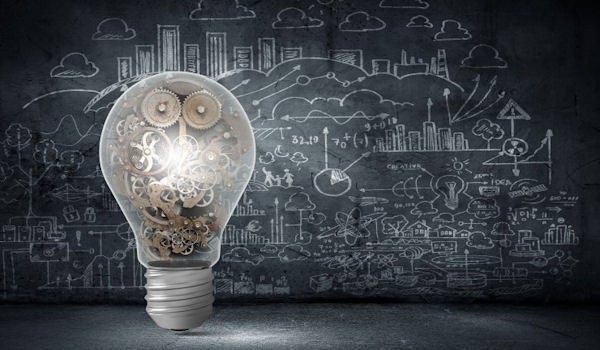Guest Writer for Wake Up World
I am sure everyone has had an ‘aha’ moment. It is when something becomes obvious and we know this is the best way forward or the best solution to a problem. These moments often happen suddenly when we do not expect them. For example, when we drive, walk, shower and daydream not thinking about anything in particular.
On the other hand, many people say that the harder they try the less likely they come up with a new, fresh idea. Say, in a meeting at work when you want to impress others and suggest something particularly clever, and you just can’t.
In this article I will explain you what creativity really is, how it works in the brain, and how you can let it happen to you.
[pro_ad_display_adzone id=”110028″]
What is Creativity?
According to the Oxford Dictionary creativity is “the ability to use skill and imagination to produce something new or to produce art; the act of doing this.”
I would suggest simplifying it a bit and say that creativity is when we invent something new by connecting many elements of reality together in one piece. These elements could be shapes, colours, notes, thoughts, words, ideas, needs, feelings, beliefs, etc.
Say, if we connect
- a need – ‘to pour a liquid into a hardly accessible container’,
- a shape – ‘funnel’,
- a material – ‘silicon’,
- a colour – ‘green’ and
- a ‘mechanism of folding’
… we can create a cool looking mini collapsible silicone funnel you can see below.
This is the essence of a creative idea. It forms by merging a few already existing elements of reality in a new way.
They become connected and then together they become something new.
Where Do “Elements of Reality” Connect?
The fact is that the brain shapes the way we perceive reality. You can watch this TED talk by Vilayanur Ramachandran if you need a proof to this statement.
Another fact is that the brain operates by using small electric currents. The brain itself does not see, hear, or smell. It understands the world only after it is translated into electricity. It is because everything that we see, hear, smell or touch; once detected by receptors in our eyes, ears and nose, becomes an electric current traveling along our nerves towards the brain. [1]
Then this current starts oscillating along brain cells and starts representing an element of our reality. There are billions of them forming in our brains every second. Billions more are stored in our memory. We still do not completely understand how the brain builds the whole impression of reality that we perceive, but we can say that two or more elements of reality (represented by oscillating electrical currents) become connected when they are in synchrony. [2, 3, 4]
How Do They Connect?
You may remember the model of synchronising metronomes placed on a board I presented in my previous article, “Synchrony: True Love and How To Let It Happen To You”. Please, watch a You Tube clip.
In the video above all metronomes eventually synchronise thanks to gentle movements of the board they sit on. Yet, before it happens they start clicking together in groups (see 1m10s) as if some of them found ‘agreement’ or ‘common ground’ easier than others. We can say that they are synchronised between themselves. This is how a new connection between oscillators is established.
Now, imagine that every metronome represents an electric current oscillating along the brain cell and codes an element of reality. For example,
- one represents ‘a feeling of frustration when you look for something and you cannot find it’,
- one represents ‘the shape of a little, plastic, transparent jar’,
- and one stores information of ‘unused free space in your garage’
The moment when they start clicking together you have sudden realisation that you can attach a little jar under the shelves to keep little screws and nails where you can easily find them. See the picture below.
Unfortunately we can think about many elements of reality for long time still not being able to connect them in a new, original way (I guess this is an experience of many).
What we need is to create a ‘board’ which allows elements of reality to communicate and gives them a chance to connect by synchronization.
But what could be this board? Can we stay simultaneously aware all elements of reality letting them find their own way to click together. Is it possible?
Diffused Attention
The answer to the above question is – yes, this is possible and it could be another reason to practice diffusing your attention. When your attention is diffused you become simultaneously aware of everything that you hear, touch smell, taste, think and feel, together with space between and inside solid objects. It is related to relaxation and letting go efforts to focus on anything in particular or any specific issue.
Diffused attention is a term coined by Dr Lester Fehmi, neuroscientist and psychologist from Princeton, US. According to Dr Fehmi, when we diffuse our attention the brain generates synchronous waves in alpha frequency oscillating across the whole brain. [4]
There are many reports documenting that alpha brain waves are generated by the brain during creative thinking. [6, 7, 8]
So, What Are the Main Rules of Connecting Elements of Reality?
As you know now the process of generating a new idea is represented by synchronisation. It means that it should fulfil the rules of synchronisation I explained in the previous post.
Firstly, a new idea should connect ‘elements of reality’ (represented by fast electric charges in the brain) which are independent from each other. For example ‘a funnel or ‘a colour green’ or ‘a mechanism of folding’ exist on their own and they can be used in many other ideas.
Secondly, it requires a medium. This medium is diffused attention which is linked to synchronous waves in alpha frequency oscillating across the whole brain.
Thirdly, it happens on its own when we relax and we stop trying.
Fourthly, it needs time to emerge. After some time the mechanism of cross-synchronisation allows some of the electric charges to click together in sync bringing a feeling of sudden insight or realisation. 9, 10
I hope is clear for you now that creativity is based on synchronisation and this is a reason why, we feel pleasure, joy, sometimes even excitement and a surge of energy when we have a brilliant idea. As you may remember from my previous post synchrony is a synonym of harmony, unity and love and everything we truly value in our life.
How Can You Create a New Idea?
First, do some research. Collect information about a problem. This will become elements of reality (electric currents oscillating in your brain in fast frequency) which will possibly connect. Then do one of diffusing attention exercises and just let it happen to you. When your attention is diffused you will produce synchronous, slow brain waves across your brain, which will work like a board for metronomes. You will feel very relaxed.
The better you are in diffusing your attention the easier it goes. You may notice an idea or solution directly during an exercise but it may happen even a few hours after the exercise is finished.
When I discovered this process for myself I was shocked to see how effective it is. I make some preparations (thinking what I would like to do, making notes, doing research, sketching the plan) and then I do an exercise. After a few minutes I start noticing new ideas. They pop into my mind one after another. I used to be nervous about forgetting them and I was taking breaks to make notes. Now, I know that sooner or later they come back to me. Good luck !
Related reading:
Article sources:
- 1. Oscillatory gamma-band (30-70 Hz) activity induced by a visual search task in humans.
. Tallon-Baudry C, Bertrand O, Delpuech C, Permier J
. J Neurosci. 1997 Jan 15;17 (2):722-34.
. [PubMed] - 2. Oscillatory synchronization in large-scale cortical networks predicts perception.
. Hipp JF, Engel AK, Siegel M
. Neuron. 2011 Jan 27;69(2):387-96
. [PubMed] - 3. Functions of gamma-band synchronization in cognition: from single circuits to functional diversity across cortical and subcortical systems.
. Bosman CA, Lansink CS, Pennartz CM
. Eur J Neurosci. 2014 Jun;39(11):1982-99
. [PubMed] - 4. Neuronal gamma-band synchronization as a fundamental process in cortical computation.
. Fries P
. Annu Rev Neurosci. 2009;32:209-24.
. [PubMed] - 5. Attention and Neurofeedback Synchrony Training: Clinical Results and Their Significance
. J. T. McKnight, PhD L. G. Fehmi, PhD
. Journal of Neurotherapy, Vol. 5(1/2) 2001
. [JoN] - 6. EEG alpha power and creative ideation
. Andreas Fink, Mathias Benedek
. Neurosci Biobehav Rev. 2014 Jul; 44(100): 111–123
. [PubMed] - 7. The time-course of EEG alpha power changes in creative ideation.
. Schwab D, Benedek M, Papousek I, Weiss EM, Fink A
. Front Hum Neurosci. 2014 May 13;8:310
. [FiHN] - 8. EEG alpha synchronization is related to top-down processing in convergent and divergent
. thinking
. Mathias Benedek, Sabine Bergner, Tanja Könen, Andreas Fink, Aljoscha C. Neubauera
. Neuropsychologia. 2011 Oct; 49(12)
. [PubMed] - 9. Different frequencies for different scales of cortical integration: from local gamma to long range alpha/theta synchronization.
. von Stein A, Sarnthein J
. Int J Psychophysiol. 2000 Dec 1;38(3):301-13
. [PubMed] - 10. Deconstructing insight: EEG correlates of insightful problem solving.
. Sandkühler S, Bhattacharya J
. PLoS One. 2008 Jan 23
. [PubMed]
Previous articles by Tomasz Kopec, MD:
- How Anxiety Works and How You Can Dissolve It
- Synchrony – True Love, And How To Let It Happen To You
- The Open Focus Theory – Diffuse Attention, Unify Reality
- Diffuse Your Attention, Open Your Focus
About the author:
 From Tomasz Kopec MD: I enjoy helping people and making the Universe a happier place. Fortunately, I work as a family doctor and this is a part of my job description. For many years I had some questions at the back of my mind, like: what is happiness, what is love, who we are, where we go after death, where this all suffering is coming from…? I have been a regular meditator since I was a teenager (mostly Zen tradition) and I was searching for answers in my head and in my heart.
From Tomasz Kopec MD: I enjoy helping people and making the Universe a happier place. Fortunately, I work as a family doctor and this is a part of my job description. For many years I had some questions at the back of my mind, like: what is happiness, what is love, who we are, where we go after death, where this all suffering is coming from…? I have been a regular meditator since I was a teenager (mostly Zen tradition) and I was searching for answers in my head and in my heart.
My turning point was reading a book The Open Focus Brain by Dr. Lester Fehmi. He runs a neurofeedback clinic for attention disorders at Princeton, New Jersey, US. I enrolled an Open Focus workshop and I became a true enthusiast of Dr. Fehmi’s approach. I love it because it beautifully connects the western scientific way of thinking with far east approach to reality. It also gives a very simple, practical solutions to a physical pan, anxiety, insomnia, creativity etc. I would like to make Open Focus a lot more recognizable because it is worth it!
To learn more about Open Focus, visit:
[pro_ad_display_adzone id=”110027″]










